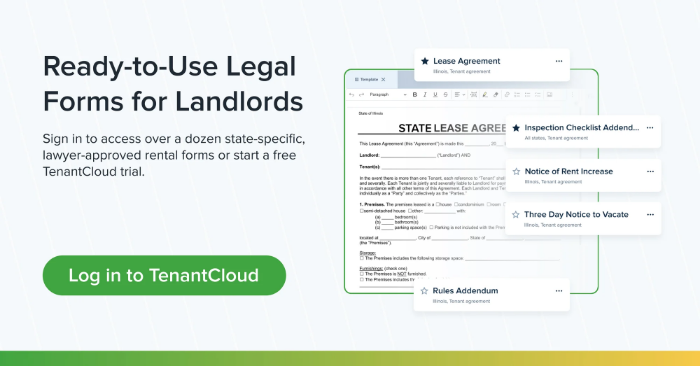
Are you an Idaho resident being evicted or a property owner in Idaho looking to evict? If you said yes to either one, it’s more important than ever that you take time to get to know Idaho’s eviction laws. How closely you follow the process may determine your overall success, and when it comes to scenarios like an eviction, you’ll want the best outcome possible.
While evictions may feel complicated and overwhelming at first—no matter what side you’re on—we’ve got everything you need to know so you can navigate each step with confidence.
In this article, we’ll go over Idaho’s eviction process, the common reasons for eviction, and more. Ready? Read on.
What Is an Eviction?
An eviction is a legal process involving a landlord lawfully removing a tenant from their rental property, typically before the lease agreement is over. Since tenants who have signed a lease are usually protected from being randomly evicted until the lease period ends, a landlord must have a reason to evict a tenant.
While the eviction process may vary according to the local laws surrounding the location of the rental property, most evictions follow these specific steps:
- Give the tenant a written notice
- Fill out a complaint
- Have the tenant served
- Attend the trial
- Final decision
In the state of Idaho, tenants can be evicted for a variety of reasons, including violation of the lease agreement, failing to pay rent, using controlled substances on the premises, or having an open-ended (month-to-month) lease. Let’s explore common eviction reasons in detail:
Reasons for Eviction in Idaho
- Failure to Pay Rent: If a tenant does not pay rent in full by the due date in their lease agreement, the landlord can serve the tenant with a 3-day notice to Pay or Vacate (Idaho Code 6-303). This notice must give the tenant a chance to pay the rent or move out of the residence within 3 days. It’s also important to mention that the tenant will have 72 hours to remove their items if the judgment rules against the tenant.
- Non-Renewal of the Lease: When a tenant’s lease is not renewed, they must move out at the end of their lease. If a tenant overstays their lease, they are considered a “holdover” tenant, and a landlord must follow the eviction process to have them removed.
With month-to-month leases in Idaho, a landlord must provide a 30-day written notice giving the tenant 30 days to move out.
- Violating the Lease Agreement: If a tenant violates terms written in the lease agreement, the landlord can provide a written 30-day notice to quit. This gives the tenant thirty days to move out. Violations may include: smoking in non-smoking areas, keeping unapproved pets, engaging in any illegal activity, or damaging the rental.
Note: When giving notice, day one includes the day the tenant is served. If the tenant pays the missing rent during the notice period, eviction does not continue.
How To File an Eviction In Idaho
If you’re a landlord, know that it is unlawful to forcefully remove a tenant on your own in any circumstance. You must have a reason for eviction enough that you’re able to provide your tenant with a written notice that states that reason in a clear, concise way. Even if a tenant directly violates the lease, landlords must follow the eviction process to remove a tenant. Landlords are not allowed to remove doors, change locks, turn off water, etc. to force tenants out.
To avoid a failed eviction (or potential legal issues), make sure to follow each step carefully:
1. Give a Written Notice
Remember, the purpose of a written notice is to avoid confusion, give the tenant time to fix the situation (if necessary), and provide enough time for the tenant to make arrangements to move out. Your written notice should include the following details:
- Reason(s) for eviction
- Date the tenant must either fix the problem (in the case of late payments or property damage) or vacate the property
2. File with the Court
After a notice has been provided and at least three days has passed, a landlord must file a legal complaint in court. This is typically done in the justice court where the rental property is located, and any associated fees or specific document requirements will vary. These documents will usually include a formal complaint and affidavit. The landlord will be responsible for any court fees.
Filing a complaint is the first step in the process and takes anywhere from several days to a month, depending on how quickly the paperwork is filed.
3. Tenant is Served
When the court has filed the complaint, the tenant must then be served. This is usually done by a court official or process server, as a third party is required to serve the tenant. They may be served one of three ways: handed to them at their door, left with another adult living with the tenant, or sent to their address via first-class mail.
4. Tenant Provides a Response
When the tenant is served, they have 21 business days to respond to the court. In their response, they have an opportunity to provide their side of the case along with any evidence. In Idaho, if the tenant does not provide a written response, the judge may favor the landlord by default.
5. Defense of the Parties
During the trial, both the landlord and tenant will have a chance to show evidence to support their case. Evidence examples include the following:
- Lease or rental agreement
- Receipts of rent payments
- Statements from witnesses
- Photos, videos, bank statements, etc.
If the landlord fails to show up to the trial, the case is dismissed. If the tenant (or their attorney) does not appear, the landlord may win the case by default.
6. Possession is Overturned
If the court rules in favor of the landlord, they will then issue a Writ of Restitution, which is a court order notifying the tenant of a specific amount of days they have to vacate before the tenant can be physically removed and the locks changed. It’s also known as an Order of Restitution.
7. Move-Out Period
At the final step in the eviction process, the tenant must move out of the property. While many states provide tenants with a set number of days after a Writ has been issued, Idaho laws declare that tenants leave the property immediately.
Remember, a landlord is never allowed to move tenants out themselves. A sheriff or other official must remove the tenant, even in the case of a winning eviction.
Property is Repossessed
After the tenant has moved out, the landlord may resume entering the property. If any items are left behind, it is recommended that the landlord contacts the tenant and provides a reasonable timeframe to pick up their belongings. If the tenant does not claim their items in time, the landlord can donate, sell, or dispose of them.
Idaho Eviction Process: The Timeline
Timelines in each state will vary depending on the court schedule and response times of everyone involved. Usually, an Idaho eviction can take anywhere from three days (the initial notice period) to several weeks. An eviction in Idaho may look something like this:
Establish a Reason for Eviction: Immediate
- Serving tenant with a notice: 3 days
- Filing court documents: 1-15 days
- Court Process: Varies
- Court Judgment: Immediately
- Tenant Vacates: Immediately following Writ of Restitution
Preparing Ahead of Time
Whether you’re a landlord or tenant, keeping a record of all documents and communications is always a good measure. This can provide a clear paper trail and provide proof of evidence in the case of an eviction or rental-related lawsuit.
Need help organizing all those screenshots and receipts? Here are some tips on storing files properly:
- Keep digital files, such as screenshots, receipts, invoices, and lease agreements, in cloud storage, on a personal drive, or on property management software.
- Store a backup of all your rental files in a separate Google Drive, DropBox, or file folder.
- If you find yourself being evicted or considering an eviction, it may be a good idea to consult with a lawyer as early as possible, that way you can have a better idea of what evidence you’ll need and can begin keeping track of important documents, taking photos, gathering testimonies, etc.
Conclusion
The eviction process in Idaho is similar to the process in other states, with a few minor differences. While it can be long and complex, the more you understand the laws surrounding your local municipality, the greater your success will be.
Be a proactive landlord or tenant, get familiar with Idaho state laws, and consult with legal professionals, and you’ll have everything you need to approach an eviction with confidence.
Pro tip: TenantCloud makes it easy for both landlords and tenants, from online communication and digital organization to tenant screening and maintenance requests. Get started with a free trial today.
Frequently Asked Questions
Can landlords remove tenants in Idaho?
No, landlords cannot physically remove tenants from their rental property, even if they are awarded an eviction in court. In Idaho, landlords must provide a verbal or written notice to the tenant before they can initiate the eviction process. Failing to follow the state’s guidelines could result in legal trouble. Seek a lawyer for additional guidance.
How do evictions work in Idaho?
Landlords must provide a written notice, file a complaint with the local court system, provide evidence, attend a court hearing, and wait for a Writ of Restitution to have a tenant evicted.
How long must landlords keep tenant belongings in Idaho?
In Idaho, there are no specific laws around the removal of tenant’s belongings. In general, it’s a good idea to communicate with tenants and provide a reasonable time for them to pick items up. If the tenant fails to pick up the items within the timeframe, the landlord can remove the items and get rid of them.



